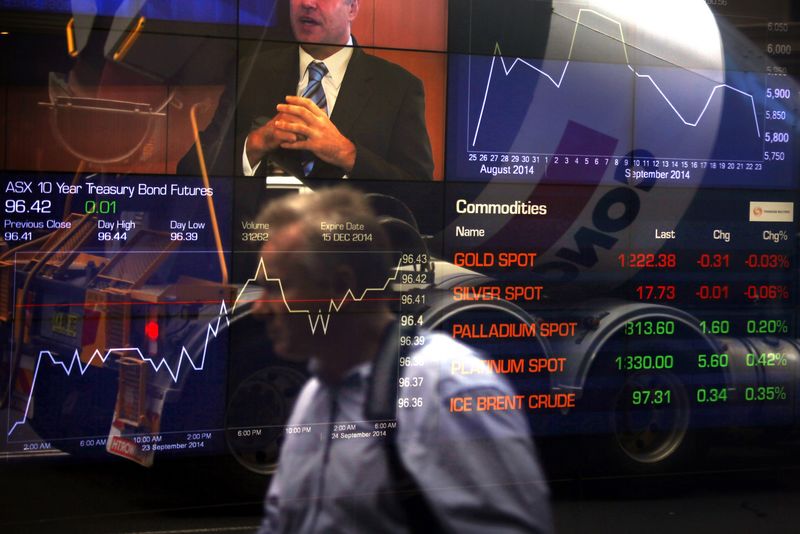A soft start is expected to kick off trading this week, with ASX 200 futures down 0.3% to 8,420 points after the ASX200 ended last week 15 points lower (-0.18%) at 8,420, retreating from a fresh record high of 8,514.5 reached earlier in the week.
The decline followed a softer-than-expected third-quarter Australian GDP report, which raised the likelihood of a dovish shift from the Reserve Bank of Australia (RBA) this week.
The weakest-performing sectors included Real Estate (-2.69%), Utilities (-1.27%), Energy (-1.02%) and Financials (-0.55%). On the other hand, IT (1.96%), Consumer Discretionary (1.73%), Consumer Staples (0.57%) and Industrials (0.31%) managed to post gains.
At the individual stock level, City Chic Collective surged 23.66%, while Select Harvests (15.18%), Betmakers (15.00%) and Kogan (14.63%) also delivered strong weekly performances.
In contrast, Liontown Resources (ASX:ASX:LTR) fell 14.38%, Droneshield dropped 14.10%, Audinate lost 11.66% and Iluka Resources slid 11.65%, marking a challenging week for these companies.
“This week's key event on the local data calendar is Tuesday's last RBA Board meeting of the year,” IG Markets analyst Tony Sycamore said. “The RBA is expected to keep its official cash rate on hold at 4.35% for a ninth straight meeting.
"However, following last week's underwhelming Australian Q3 GDP, a dovish shift is expected, (most likely to appear in the Q&A), which would set the stage for a potential rate cut in February. The interest rate market is pricing in a 44% chance of a 25bp RBA rate cut in February and a 100% probability of a 25bp rate cut by April.”
US higher but subdued picture remains
The S&P 500 and Nasdaq reached fresh record highs on Friday, buoyed by a mixed Non-Farm Payrolls report that bolstered expectations of a Federal Reserve rate cut in December. For the week, the Nasdaq 100 jumped 3.3%, the S&P 500 rose 0.96%, while the Dow Jones slipped 0.6%.
Total (EPA:TTEF) payrolls rebounded sharply to 227,000, up from a revised 36,000 in the prior month, as the impact of strikes and storm-related disruptions eased. However, the household survey painted a more subdued picture, with the unemployment rate climbing to 4.2% and the participation rate dipping to 62.5% from 62.6%. Adjusted for the decline in participation, the unemployment rate would have risen further to at least 4.3%.
“Speaking on Friday ahead of the start of the FOMC's blackout period, Fed Governor Bowman said that inflation is still "uncomfortably" above target and prefers a careful approach to adjusting rates, pending November's inflation data,” Sycamore said.
“Cleveland Fed President Hammack noted the Fed is "at or near" a point to slow rate cuts. Meanwhile, San Francisco Fed President Daly advocated for gradual easing.
“This week's November CPI report is the last key data release before the December FOMC meeting. Expectations are for headline inflation to tick up to 2.7% YoY from 2.6%, and core inflation is expected to remain at 3.3% YoY. The probability of a 25bp December Fed rate cut starts the week at 88%.”
Mixed trading in Europe
European sharemarkets experienced mixed trading on Friday.
- France's CAC 40 rose 1.3%, defying ongoing political uncertainty. French President Emmanuel Macron announced plans to appoint a new prime minister in the coming days, with a primary focus on securing parliamentary approval for the 2025 budget.
- Germany's main share index edged up 0.1%, reaching a record high, while the continent-wide FTSEurofirst 300 index also gained 0.1%. The FTSEurofirst logged its strongest weekly performance in 10 weeks, advancing 2%.
- In contrast, London's FTSE 100 fell 0.5% on Friday but ended the week 0.3% higher.
Currencies and commodities
Currencies were mixed against the US dollar in European and US trading on Friday.
- The Euro fell from US$1.0621 to US$1.0542 before settling near US$1.0570 at the US close.
- The Australian dollar declined from US$0.6442 to US$0.6371, finishing close to US$0.6390.
- The Japanese yen strengthened from JPY150.67 per US dollar to JPY149.40, closing around JPY150.05.
Commodities
Global oil prices fell by over 1% as analysts predicted a supply surplus in 2024 due to weak demand, despite OPEC+ extending production cuts through 2026.
- Brent crude dropped by US$0.97 (1.3%) to US$71.12 a barrel.
- US Nymex crude lost US$1.10 (1.6%) to US$67.20.
- Over the week, Brent crude declined 2.5% and Nymex fell 1.2%.
Base metal prices showed mixed results.
- Copper futures edged up 0.1%, supported by reduced Chinese inventories, while aluminium futures slid 2.5%. Weekly performance saw copper gaining 1.4% and aluminium slipping 0.5%.
- Gold prices rose on Friday, with futures up US$11.20 (0.4%) to US$2,659.60 an ounce after data indicated a gradually easing US labour market, supporting expectations of further Federal Reserve rate cuts. Spot gold traded near US$2,633 an ounce at the close but declined 0.8% for the week.
- Iron ore futures fell by US$2.18 (2.1%) to US$104.11 a ton, as restocking activity in China slowed amid high portside inventories and declining steel margins. The steel-making commodity dropped 1.1% for the week.
What about small caps?
The S&P/ASX Small Ordinaries (XSO) dipped on Friday, falling 0.76% to 3.209.10. For the week, the index was higher by 0.32%.
It is a slow start to the week on the newsfront, however, you can read about the following and more throughout the day.
